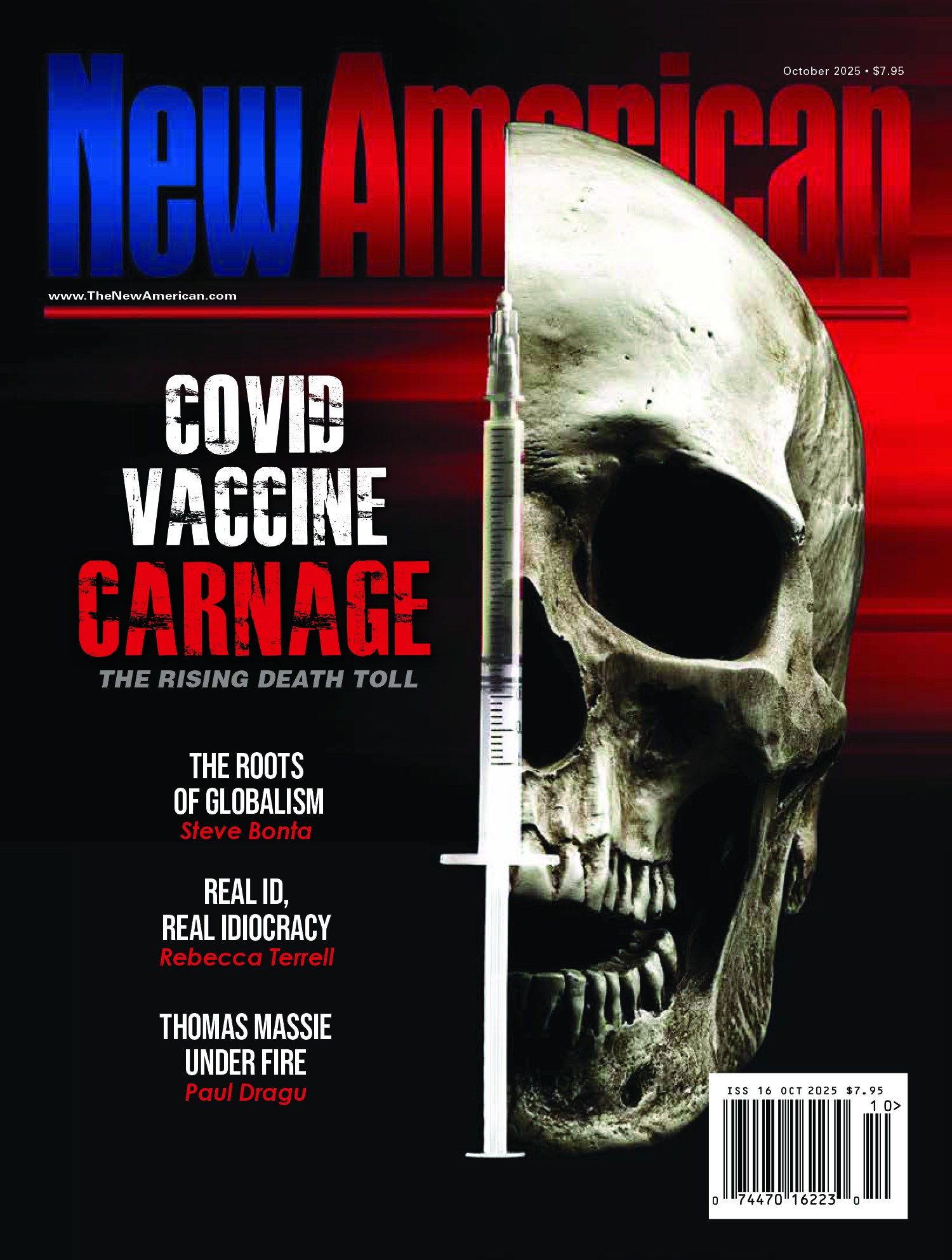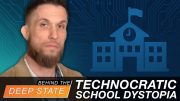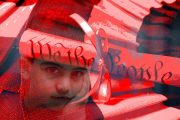The State of Wisconsin is a microcosm of everything that’s wrong in public education, including education policy at the federal and state levels, as well as with the unionization of public employees. In the midst of the protests by unionized teachers.
U.S. Education Secretary Arne Duncan (photo, left) remarked February 23 that “nobody” could be satisfied with the reading and mathematics scores achieved by eighth graders in Wisconsin public schools, noting that “they’re clearly not what they should be.” Duncan declined, of course, to pin the blame on teachers for the generally unsatisfactory performance of the nation’s (including Wisconsin’s) public school system, as doing so would have been politically incorrect and angered the all-important National Education Association (NEA) and the American Federation of Teachers (AFT), among the biggest supporters of far-left Democratic candidates for public office. Instead, he said that “everybody” from parents, to school administrators, to the local community, to the business community needed to step up to the plate and make the public schools better.
Great line, except for the fact that (a) blaming collective society is a typical socialist mantra, and (b) anybody stepping up to the plate with anything besides money gets the boot. Nobody dares to “think outside the box” when it comes to education reform.
In fact, the Education Secretary took great pains Thursday, February 24, to add that the move in Wisconsin and other states like Rhode Island to strip teachers of bargaining rights worries him. He even vowed to stick up for teacher unions, which earned him predictable praise from the head of the American Federation of Teachers. (For comparative purposes, the biggest teacher union, the NEA, represents some 3.198 million to around 3.269 million, depending on which source you believe, whereas the AFT represents about 1.5 million members nationwide.)
Duncan was careful not to elaborate on how he would advise GOP Wisconsin Governor Scott Walker, but he promised educators that he would put pressure on governors to work with unions, not antagonize them.
Never mind about the unions antagonizing the public and further compromising what little education pupils get.
As if this weren’t enough to further lay waste to public schools, many University of Wisconsin doctors were videotaped disseminating phony sick-day notes by the boxful to teachers and others who wanted to protest at the Wisconsin State Capitol rather than spend the day teaching. This provides new insight into the lengths leftists will go to in securing their agenda, in whatever field they represent, by promoting agitation, inciting chaos and even giving license to commit fraud. These are the three primary tactics leftist-wingers always use to institutionalize “change,” and they generally get away with it. But if conservatives engage in the same strategies, they are slapped with civil and criminal penalties. After all, there are laws against inciting to riot, causing public disturbance, not to mention fraud. But leftists, because they hold the bulk of the money and, consequently, legitimacy, do not have to abide by the rules.
One “sick” side-effect of all the shenanigans in Wisconsin and Rhode Island is that once-revered professionals like educators and physicians are moving ever-farther from role models for the young. This will hurt both professions down the road; in fact, after 40 years of blue-collar temper tantrums, teachers are barely respected at all, either by parents or pupils. Physicians: take note. As government-regulated health “care,” is progressively shoved down the public throat under various labels, union-style “bargaining” may increasingly replace the professional associations you knew. Imagine if all doctors, regardless of specialty, plus their medical staffs, suddenly went on strike at the behest of the American Medical Association (AMA). Well, it wouldn’t be long before the AMA was no longer seen in the professional light that it is now. You can argue about many of the AMA’s pronouncements, but medical professionals are still more or less left to practice medicine on a patient-by-patient basis, even if dues are used for lobbying issues that offend some Americans and even if a few doctors at the University of Wisconsin manage to pull off sham sick-scripts.
Teachers, on the other hand, are no longer free to practice their profession on a student-by-student basis. So aligned with government has education become that the hand that feeds them is now the hand that bites. The NEA and AFT at first were sold as teachers’ “professional associations,” akin to the AMA in medical practice, and reluctance to join was equated with being unprofessional. Today, the teachers’ unions have morphed into rabble-rousing, counterculture, anarchy-espousing throngs perceived by the public as malcontents, professional babysitters, and money-grubbing incompetents.
Older, dedicated teachers, unfortunately, are stuck with this perception; they joined the national union pretty much under false promises of enhanced status, with early access to cutting-edge teaching methodologies. Thus did they allow themselves to get roped into a combined local-state-national mega-association back in the 1970s, when formerly they were merely asked (not forced) to join either a local and/or state organization without necessarily shelling out for the umbrella, national organization. Now, their options are, essentially: Be 100% unionized and be leftist or be gone. Being “left-wing” on educational issues means placing social-engineering and political objectives before learning.
Everyone who follows education and schools knows that American students’ scores in basic subject areas continue to show poorly, or even plummet, on international measurements, the most credible being the International Mathematics and Science Study. Results of the 2007 Third International Mathematics and Science Study (TIMSS) involving a half-million students in 41 countries are a pretty good gauge. Participants were primarily the industrialized countries of Europe plus the United States, Canada, New Zealand and Asia. (So-called Third World countries that have a higher literacy rate than the U.S.—for instance, Costa Rica and few others that contribute a significant number of U.S. advance degreed immigrants, like India—were not part of the study.) Later TIMSS measures have been no better. (In the summer of 2010, eight states were selected to participate in TIMSS.)
The math and science tests showed U.S. fourth-graders performing poorly, middle-school students worse, and high-school students completely unable to compete using same criteria everyone used to call “average” in the 1940s. The conclusion that American pupils are “near the bottom” at the high school level is hard to dismiss. People have a tendency to think that although this picture is bleak, said Pascal D. Forgione, Jr., Ph.D. U.S. Commissioner of Education Statistics in a speech, none of this somehow applies to their own school. But even if your school compares well in SAT scores, it probably is a lightweight, he says, on the international scale.
Note that Dr. Forgione is affiliated, and therefore familiar with, the National Center for Education Statistics, which is an agency affiliated with the U.S. Department of Education. So when U.S. Education Secretary Arne Duncan says that “nobody can be happy” with test scores in Wisconsin, or that the schools are “clearly not where they should be,” it is an admission of policy failure on an enormous scale, given the number of years this has been going on. Dr. Forgione minces no words for the ongoing decline:
By the time our students are ready to leave high school — ready to enter higher education and the labor force — they are doing so badly with science they are significantly weaker than their peers in other countries.
Our idea of “advanced” is clearly below international standards.
There appears to be a consistent weakness in our teaching performance in physical sciences that becomes magnified over the years.
Dr. Forgione comes to the same conclusion as do many knowledgeable American education reformers: that the enormous resources and increased spending levels for education, which far exceeds any competitors in the global market, still results in our underperformance. Dr. William Schmidt, who oversees the research effort into TIMSS results, claims that the root of the failures, especially in math and science, begins with curricula in U.S. middle schools. United States textbooks treat topics with a “mile-wide, inch-deep” approach, Schmidt charges. A typical U.S. eighth-grade math textbook, he claims, deals with about 35 topics. By comparison, a Japanese or German math textbook for that age would have only five or six topics.
In other words, are schools are not focused, so neither are our students.
Jean McLaughlin, president of Barry University was quoted as saying that “the public schools lack focus; instead of concentrating on education, they dabble in social re-engineering.” This view was echoed by the superintendent of the country’s fourth largest school district in Miami-Dade, Florida, who alleges that “half our job is education, and the other half is social work.”
Such appraisals of our schools, by credible professionals, mean that despite the behemoth status of the U.S. Department of Education, its state clones and all the ridiculous mandates that emanate from their combined existence, coupled to a universal teacher-training system that is very antithesis of what most people think of as “professional,” we now have another bona fide national security crisis, as well as horrendous social problems.
What do our education policymakers intend to do about it? A 2011 NAEP-TIMSS Linking Study is poised to improve matters by linking these two assessments: the United States’ touchy-feely National Assessment of Educational Progress (NAEP) and the TIMSS utilizing “the same testing conditions.” Note that state assessments are versions of the national one, NAEP. The states feed both student and local-school data directly into computer systems of the National Center for Education Statistics. So, the advertising for this planned link goes that it will “provide examinee-level correlations between NAEP and TIMSS scores that will be used to improve the accuracy of the predicted TIMSS state scores.” This is a polite way of saying that the test will be dumbed-down to make it appear that American students, especially those in public schools, are doing better.
NAEP-like booklets will contain both NAEP and TIMSS blocks of assessment questions. Note the term “assessment” because it characterizes the American NAEP. How? An “assessment” is not a “test.” The TIMSS has more real test questions. Assessments can be subjective and incorporate social concerns. Test questions demand factual knowledge. Even so, all 50 states and the District of Columbia have “volunteered” (read: were “arm-twisted”) to take the Science NAEP in 2011.
During the spring 2011 data collection period, TIMSS will also add state-level assessments in the eight states as well as a national sample with TIMSS-like booklets that contain both NAEP and TIMSS blocks of assessment questions. How, then, will lawmakers be able to tell them apart?
As our leaders continue to coddle the teachers’ unions, teaching per se will continue to be made more difficult. The school atmosphere will further deteriorate into one that accommodates neither instruction nor learning. National security, social pathologies, and job-related fallout will heighten.
Wisconsin and Rhode Island serve as warnings. If our policy toward education and unionization of public employees continues, the nation’s implosion as a world power will be assured.
Beverly K. Eakman began her career as a teacher in 1968. She left to become a scientific writer for a NASA contractor. She went on to serve as a former speechwriter for the Voice of America and for the late Chief Justice Warren E. Burger when he chaired the Commission on the Bicentennial of the U.S. Constitution. She was an editor and writer for the U.S. Dept. of Justice before retiring from federal government. She is now author of six books covering education policy, mental-health issues, data-trafficking and political strategy with dozens of keynote speeches, feature articles and op-eds to her credit. Latest book (2011): A Common Sense Platform for the 21st Century.




